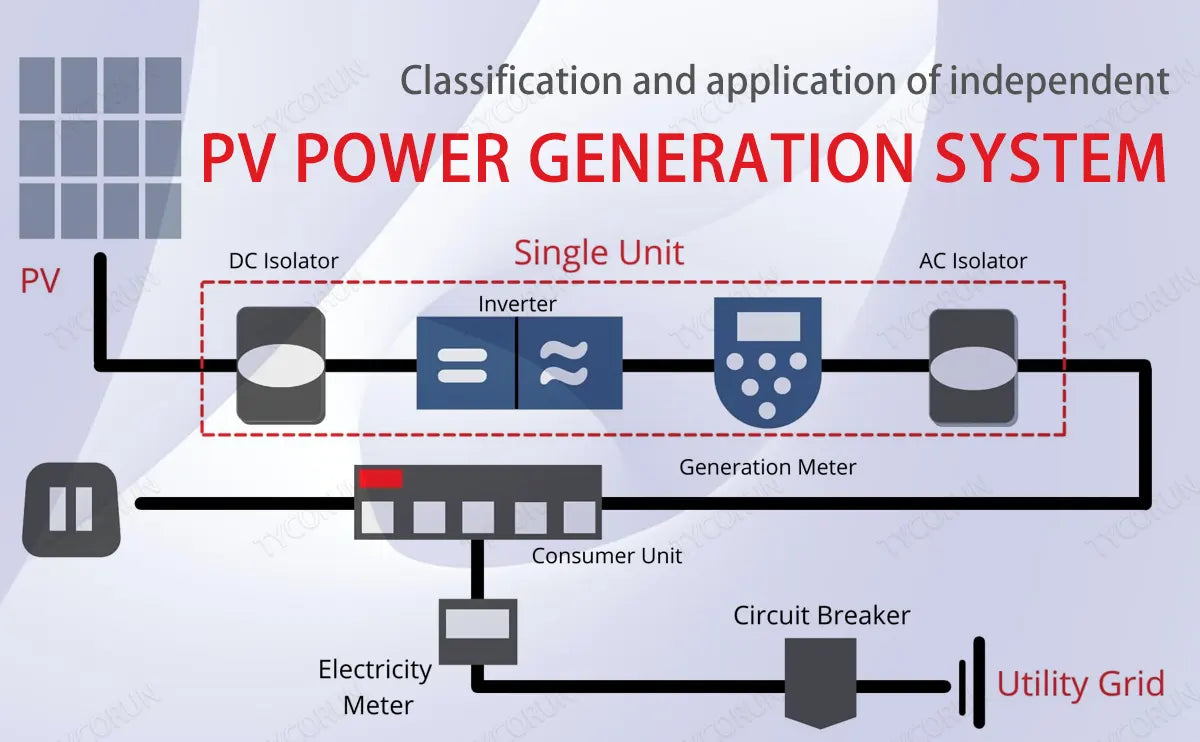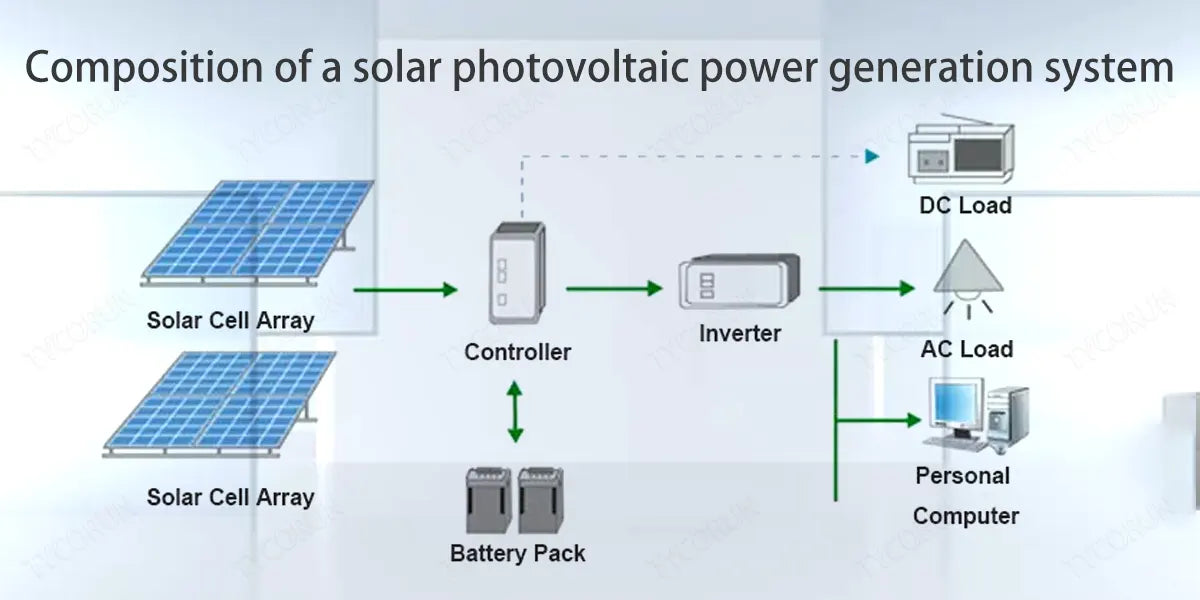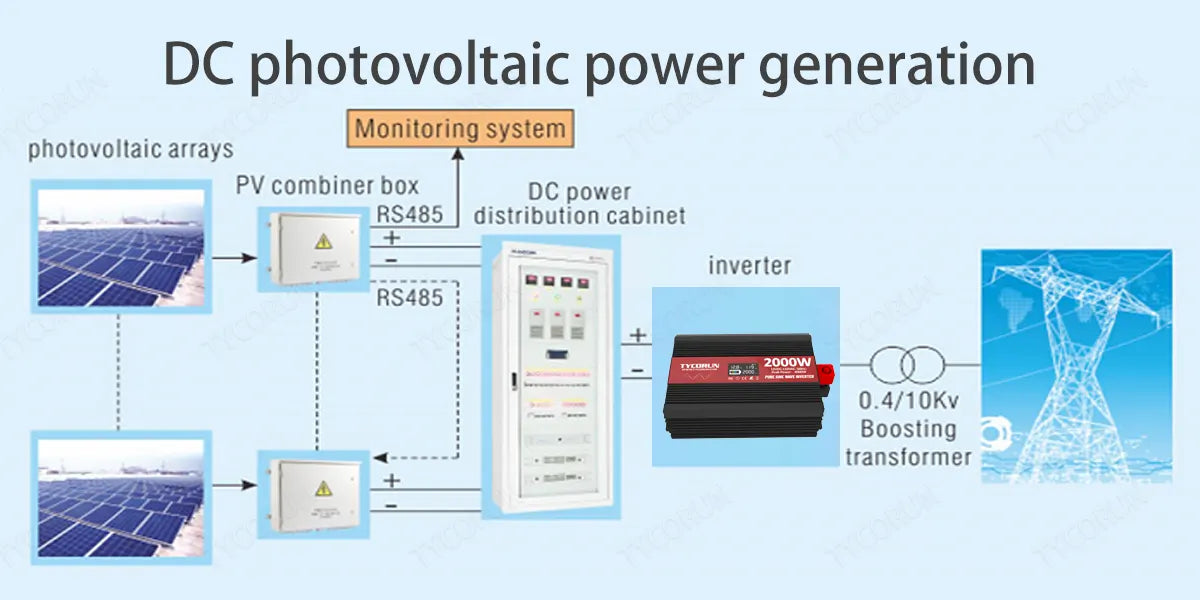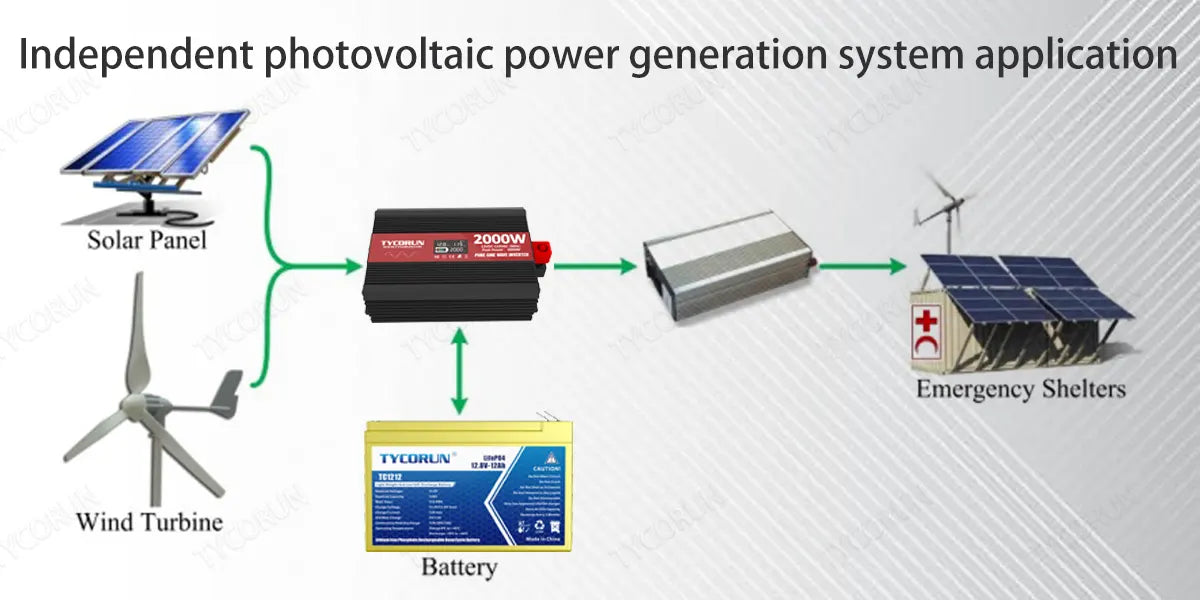
Main content:
The independent photovoltaic power generation system is an independent power generation system compared to the grid-connected power generation system. The stand-alone system is mainly used in remote areas without electricity, and the main purpose of its construction is to solve the problem of no electricity.
The reliability of its power supply is greatly affected by factors such as weather and load, and the stability of the power supply is relatively poor, so it is necessary to install energy storage and energy management equipment in many cases.
1. Composition of a solar photovoltaic power generation system
The basic structural units of the power supply part of the solar power generation system include: photovoltaic array, battery and controller. Solar energy is a type of radiant energy that must be converted into electricity with the help of an energy converter, which is called a solar battery.
In the process of using photovoltaic power generation, if the photovoltaic cell is used for power supply, its output power is too small, and it is generally necessary to connect it in series and parallel to form a photovoltaic cell module, and then connect the modules in series and parallel to form a photovoltaic array to supply power.

At present, photovoltaic cells can be roughly divided into silicon photovoltaic cells and compound semiconductor photovoltaic cells, and the most commonly used are mainly monocrystalline silicon photovoltaic cells and polycrystalline silicon photovoltaic cells.
2. Classification of independent photovoltaic power generation systems
Stand-alone photovoltaic power generation systems are also called off-grid photovoltaic power generation systems. It is mainly composed of photovoltaic modules, controllers, and batteries, and an AC inverter is also required to supply power to AC loads. Independent photovoltaic systems can be divided into two categories: DC photovoltaic systems and AC photovoltaic systems.
3. DC photovoltaic power generation
- Battery-free DC photovoltaic power generation system
The characteristics of the battery-free DC photovoltaic power generation system are that the electrical load is a DC load, and there is no requirement for the use time of the load, and the load is mainly used during the day.
The solar cell is directly connected to the electrical load, generating electricity for the load to work when there is sunlight, and stopping working when there is no sunlight. The system does not require the use of a controller and does not have a battery energy storage device.

The advantage of the battery-free DC photovoltaic power generation system is that it eliminates the loss of energy through the controller and the storage and release of the battery (12 volt 200ah lithium battery), and improves the efficiency of solar energy utilization. The most typical application for this type of system is a solar photovoltaic water pump.
- DC photovoltaic power generation system with battery
The DC photovoltaic power generation system with 12v 100ah lithium ion batteries are composed of solar cells, charge and discharge controllers, storage batteries and DC loads. With sunlight coming in, solar cells convert light energy into electrical energy for use by the load, and at the same time store electrical energy in the battery. At night or on rainy days, the battery provides power to the load.
This kind of system is widely used, from small solar lawn lights to garden lights to large mobile communication base stations and microwave transmission stations away from the power grid to rural power supply in remote areas. When the system capacity and load power are large, it needs to be equipped with solar cell arrays and battery packs.
4. AC photovoltaic power generation
- With hybrid photovoltaic systems
Compared to the DC photovoltaic power generation system, the AC photovoltaic power generation system has an additional AC inverter to convert DC power into AC power and provide power for the AC load. AC and DC hybrid photovoltaic power generation systems can supply power to both DC and AC loads.

- With complementary mains power
The municipal supplementary photovoltaic power generation system is based on solar power generation in an independent photovoltaic power generation system, supplemented by ordinary 220V alternating current supplementary electric energy.
In this way, the capacity of solar cells and batteries in the photovoltaic power generation system can be designed to be smaller, basically there is sunshine on the day, and the electricity generated by solar energy is used on the same day, and the mains energy is used to supplement it when it encounters rainy days.
Most areas of our country have more than 2/3 of the fine weather for many years, so the form not only reduces the one-time investment in the solar power generation system, but also has a significant energy saving and emission reduction effect, which is a good way to promote and popularize solar power generation in the current stage.
5. Independent photovoltaic power generation system application
Stand-alone photovoltaic power plants are also called isolated photovoltaic power plants. In villages, towns and islands without electricity with good lighting conditions and relatively large load demand, it is suitable to establish independent photovoltaic power stations in areas without electricity where users are relatively concentrated within a few kilometers.

At present, the capacity scale of independent photovoltaic power stations is from a few kilowatts to tens of kilowatts. The power station consists of an array of photovoltaic panels, batteries and inverters, and a distribution and transmission system.
6. Conclusion
The power generation system completes the charging of the battery during the day, and at the same time supplies power to the photovoltaic water pump and processing machine, carries out pumping, water storage and processing operations, and completes the inverter discharge control of the battery at night to realize the power supply to the load.
Related articles: off grid solar batteries, Top 10 photovoltaic battery companies in the world, Top 10 home solar panels manufacturers in the world
















